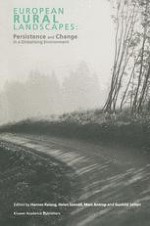2004 | OriginalPaper | Buchkapitel
New Money and the Land Market
Landownership in 19th-Century Twente, the Netherlands
verfasst von : Elyze Smeets
Erschienen in: European Rural Landscapes: Persistence and Change in a Globalising Environment
Verlag: Springer Netherlands
Enthalten in: Professional Book Archive
Aktivieren Sie unsere intelligente Suche, um passende Fachinhalte oder Patente zu finden.
Wählen Sie Textabschnitte aus um mit Künstlicher Intelligenz passenden Patente zu finden. powered by
Markieren Sie Textabschnitte, um KI-gestützt weitere passende Inhalte zu finden. powered by
During the nineteenth century the Netherlands witnessed the rise of a newly wealthy class; an urban nouveaux riches born of banking, trade and industry. Despite the origins of their prosperity, many of these individuals chose to invest part of their wealth in landownership. This was a phenomenon that was clearly evident in the Twente region of the eastern Netherlands (Figure 1). Here, the chief source of new money lay in the growing textile trade. But it was the coincidence of this industrial development with important changes in the institutional structures of landownership — specifically the radical transformation of long-established systems of communal ownership —, which allowed the newly wealthy the opportunity to establish themselves as an important presence in the land market. Together, the privatisation of communal land and the entry of a new class of investors into the market point to changes with a potentially important effect on the society and landscape of Twente. This paper attempts to increase our knowledge of this development through a brief exploration of the scale and location of land purchases, the use made of newly-acquired land and the motives that prompted entry into the land market.
